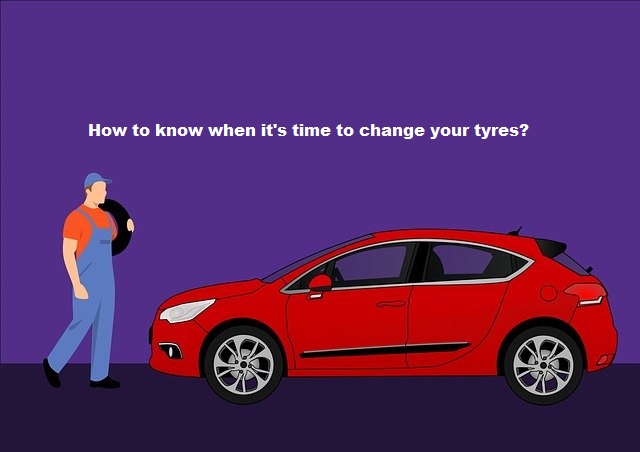In this article, we’ll tell you how to know if it’s time to change your tyres.

A worn-out tread pattern means it’s time to buy a new set of tyres. The condition affects driving, acceleration, directional stability and braking distance, especially on wet surfaces or slush. The main thing is not how much you saved by stretching a couple of thousand kilometers on old set; the main thing is the driver’s safety, passengers, and other road users. Therefore, if the tyres are seriously worn out, they need to be replaced.
When the tyre becomes unsuitable for use?
On average, motorists use economy or middle-class tyres for up to three years, premium tyres for up to five years. But this is individual, depending on many factors. Therefore, the time passed since the purchase of tyres is not the primary indicator, unless they are ten years old (then the question, whether to change or not, is not worth it – definitely change). The rate of wear of a tyre can be influenced by the driving style, the quality and surface of the roads on which the car is most often driven, and weather conditions.
Among the main reasons for tyre wear or failure are the following:
- Mechanical damage: puncture, cut, impact.
- Poor tyre fitting and wheel balancing.
- Improper storage of tyres.
- Aggressive driving style and high-speed driving.
- Incorrect tyre pressure.
- The driver often resorts to hard braking with complete wheel blocking.
- Driving with a faulty vehicle suspension.
- Driving with unregulated wheel alignment.
- The car stands still for a long time.
The wear rate can be affected by machine malfunctions. For example, if a tyre clearly shows wear on one side, this could signal a suspension problem. In this case, it is not enough to change tyres – you need to contact a service centre and solve the problem that caused tyre wear.
Also checkout: Is it dangerous to paint the brake calipers of the car?
So, how can you tell if your tyre needs to be replaced?
Tyres become unsafe when the tread wears off. Its task is to push water out of the wheel-to-road contact patch to increase traction and prevent slipping on wet surfaces. Therefore, the car enthusiast needs to monitor how the tread pattern changes and check the depth of the grooves. They should be inspected once a month and additionally before each long-distance trip.
How do you know if the rubber has worn out?
To establish that the tyres are worn out, help:
- Wear indicator. Locate the lug on the tyre in the longitudinal groove that is perpendicular to the pivot. If the indicator is flush with the tread, then the tyre has reached its limit of service life, is no longer safe, and it is time to replace it.
- Digital indicator. These are figures and figures squeezed out with varying degrees of intensity in the tread. The disappearance of the last digit evidences the fact that the rubber is worn out. In addition to numbers, Nokian tyres have added a snowflake – as soon as it wears off, you should purchase new rubber.
- Tread depth gauge – you can buy it at any professional tyre centre.
If the tyres have cuts, breaks that open the cord, they urgently need to be replaced. One cannot justify the risk of losing control of the vehicle at speed due to a burst tyre, so in such cases, you should immediately change the tyres and do not use the car until you have installed new pair.
If the budget is limited, it can replace wheels in pairs, but always on one axle.
Also checkout: Perfect Guide to E-scooters
In what other cases do you need to change tyres?
Drivers will soon have to “change their shoes” because of the onset of winter. However, tyre manufacturers suggest against this and recommend not to wait for the winter but to replace tyres in advance, as soon as possible.
It would help if you change them before the onset of night frosts: when the temperature drops below zero, ice appears on the roads, on which summer tyres are ineffective. Also, check out the car tyre brands available in your region.
The suggestion to replace tyres when it gets cooler up to + 7 ° С is because summer tyres harden in cold weather. Which in turn affects the degree of the grip amid the vehicle and the road. The lower the temperature, the longer the braking distance and the risk of skidding.
Was this helpful?
0 / 1